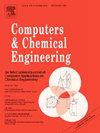Performance monitoring of chemical plant field operators through eye gaze tracking
IF 3.9
2区 工程技术
Q2 COMPUTER SCIENCE, INTERDISCIPLINARY APPLICATIONS
引用次数: 0
Abstract
Field activities performed by human operators are indispensable in process industries despite the prevalence of automation. To ensure safe and efficient plant operations, periodic training and performance assessment of field operators (FOPs) is essential. While numerous studies have focused on control room operators, relatively little attention has been directed to FOPs. Conventional training and assessment techniques for FOPs are action-based and ignore the cognitive aspects. Here, we seek to address this crucial gap in the performance assessment of FOPs. Specifically, we use eye gaze movements of FOPs to gain insights into their information acquisition patterns, a key component of cognitive behavior. As the FOPs are mobile and visit different sections of the plant, we use head-mounted eye-trackers. A major challenge in analyzing gaze information obtained from head-mounted eye trackers is that the operators’ Field of View (FoV) varies continuously as they perform different activities. Traditionally, the challenge posed by the variations in the FoV is tackled through manual annotation of the gaze on Areas of Interest (AOIs), which is knowledge- and time-intensive. Here, we propose a methodology based on Scale-Invariant-Feature-Transform to automate the AOI identification. We demonstrate our methodology with a case study involving human subjects operating a lab-scale heat exchanger setup. Our automated approach shows high accuracy (99.6 %) in gaze-AOI mapping and requires a fraction of the time, compared to manual, frame-by-frame annotation. It, therefore, offers a practical approach for performing eye tracking on FOPs, and can engender quantification of their skills and expertise and operator-specific training.
通过眼注视跟踪对化工厂现场操作人员进行绩效监测
尽管自动化已经普及,但在过程工业中,由人工操作人员执行的现场活动是不可或缺的。为了确保工厂的安全和高效运行,对现场操作人员(FOPs)进行定期培训和绩效评估是必不可少的。虽然许多研究都集中在控制室操作员身上,但对控制室操作员的关注相对较少。传统的培训和评估技术是基于行动的,忽视了认知方面。在此,我们力求解决在对渔业项目执行情况进行评估方面的这一关键差距。具体来说,我们利用FOPs的眼球注视运动来了解他们的信息获取模式,这是认知行为的一个关键组成部分。由于FOPs是移动的,他们会访问工厂的不同区域,我们使用头戴式眼动仪。分析头戴式眼动仪获得的注视信息的一个主要挑战是,操作员的视场(FoV)随着他们执行不同的活动而不断变化。传统上,由FoV变化带来的挑战是通过手动注释关注区域(aoi)的凝视来解决的,这是知识和时间密集型的。本文提出了一种基于尺度不变特征变换的AOI自动识别方法。我们通过一个涉及人类受试者操作实验室规模热交换器设置的案例研究来展示我们的方法。与手动逐帧注释相比,我们的自动化方法在凝视- aoi映射中显示出很高的准确性(99.6%),并且只需要一小部分时间。因此,它提供了一种对FOPs进行眼动追踪的实用方法,并且可以量化他们的技能和专业知识以及操作员特定培训。
本文章由计算机程序翻译,如有差异,请以英文原文为准。
求助全文
约1分钟内获得全文
求助全文
来源期刊

Computers & Chemical Engineering
工程技术-工程:化工
CiteScore
8.70
自引率
14.00%
发文量
374
审稿时长
70 days
期刊介绍:
Computers & Chemical Engineering is primarily a journal of record for new developments in the application of computing and systems technology to chemical engineering problems.
 求助内容:
求助内容: 应助结果提醒方式:
应助结果提醒方式:


